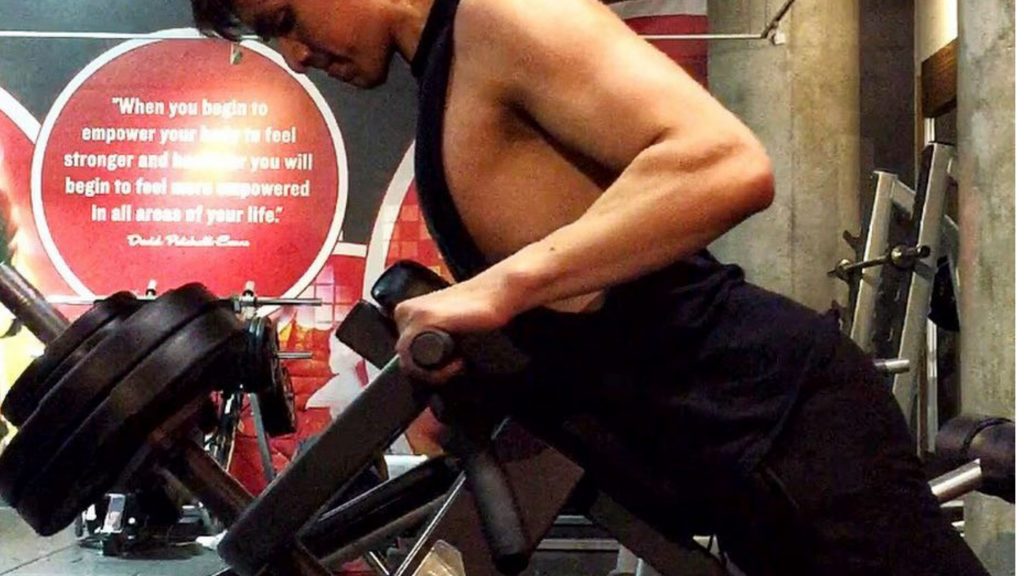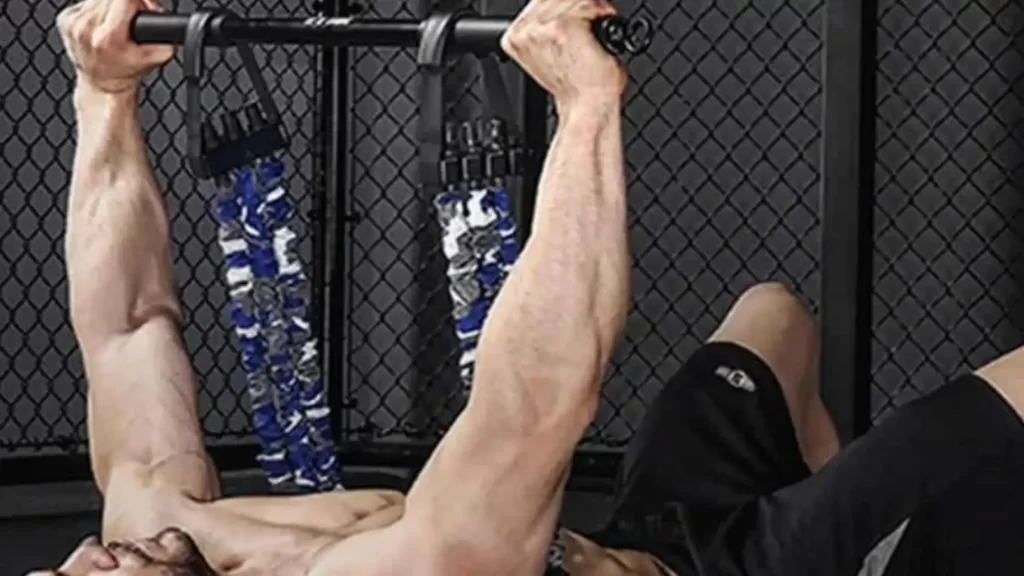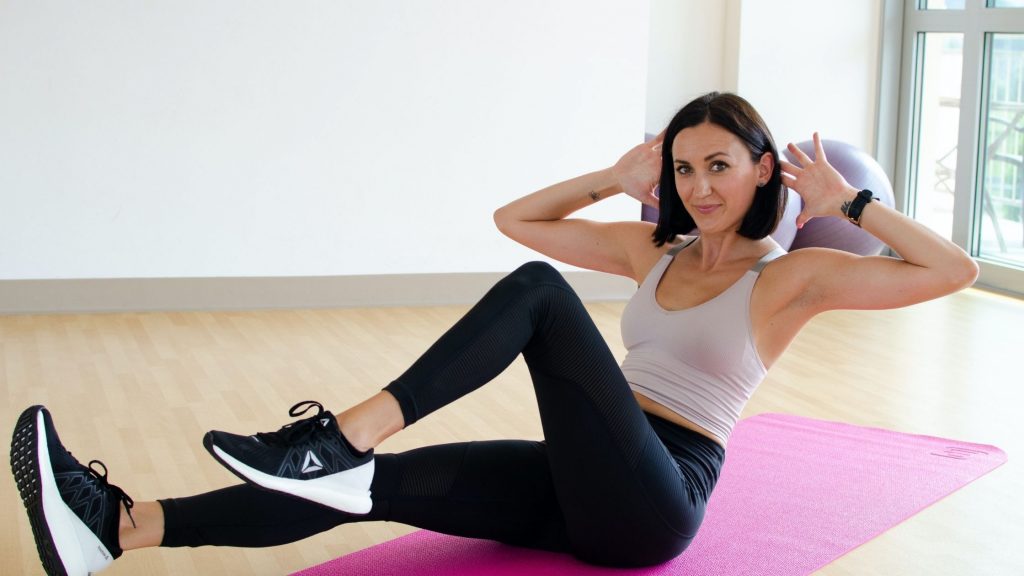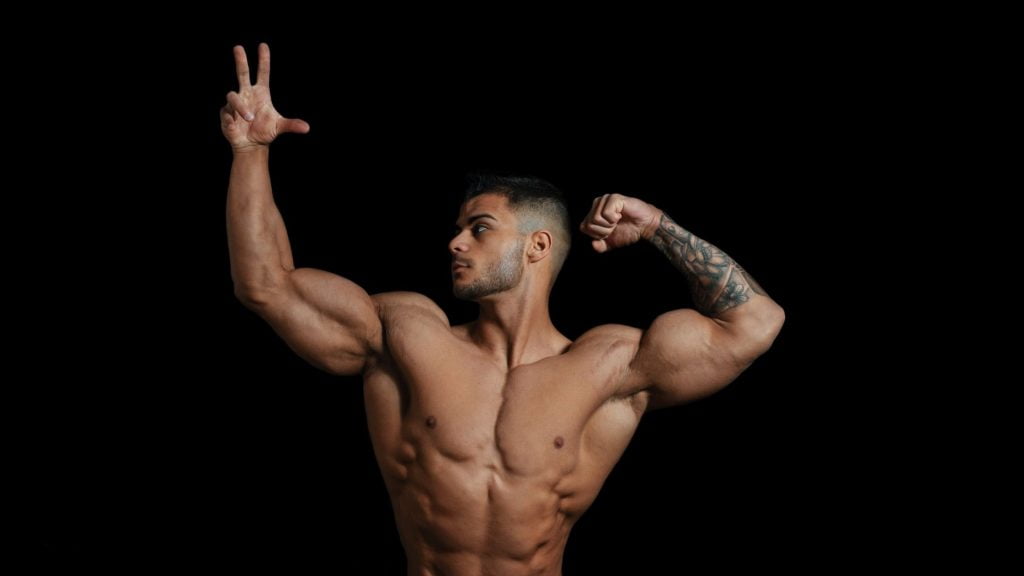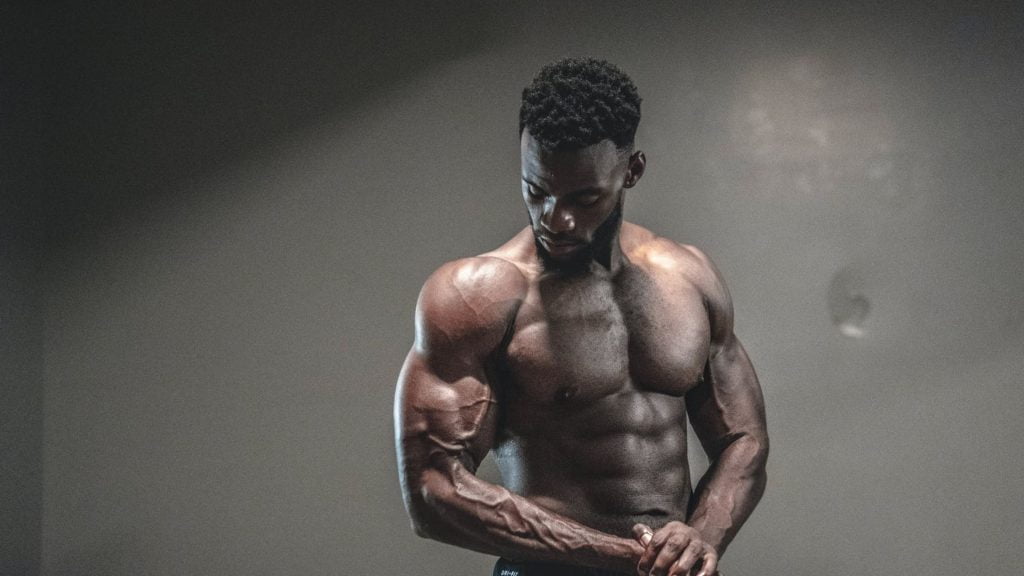You only need a pair of dumbbells and a bench to do the supported chest row. Although the name implies a focus on the chest, it is actually an exercise that focuses on the shoulders and back.
This sort of row eliminates the requirement for back and core stability by supporting the front of your body against the bench, allowing you to row with better form.
If you wish to improve your back and shoulder strength, continue reading…
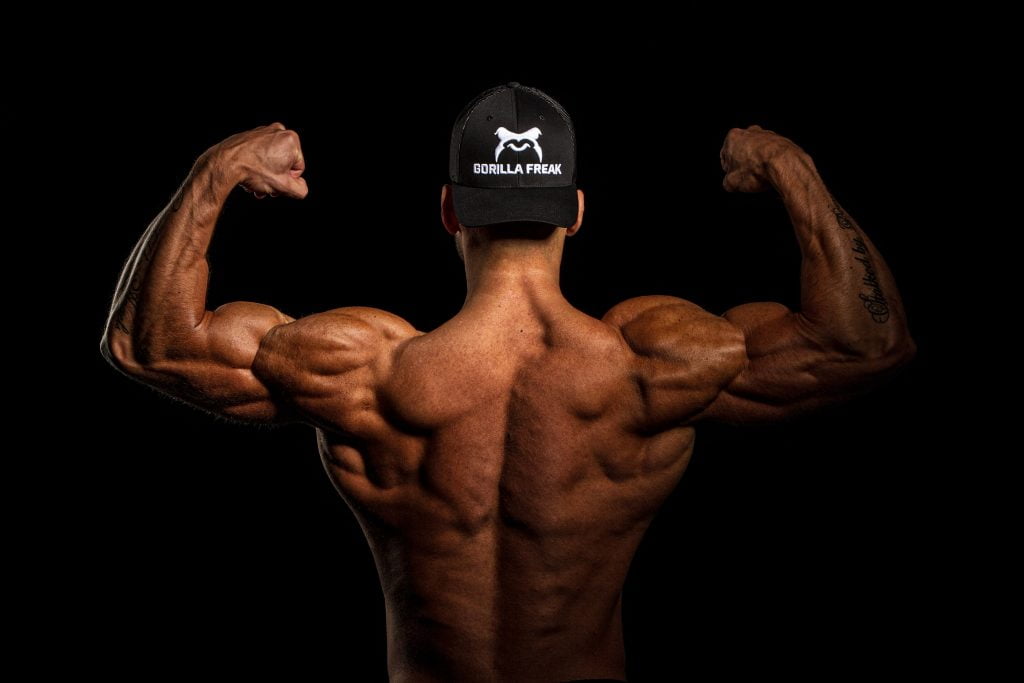
IN THIS ARTICLE
What is a Chest Supported Row?
The row is a popular compound exercise. It consists of several joints that move across a wide range of motion. As a result, it engages a wide range of muscles from all over the body, making it particularly useful for improving upper-body strength and endurance.
A dumbbell row with your chest supported is an effective option. It is a row where your chest is supported, as the name implies. You eliminate the need for your back to stabilize the movement by leaning into a bench with your upper torso. In contrast to other rows, such as the bent-over row, your lower back and hamstrings are not used to stabilize the movement.
This row is significantly more effective for targeting the back muscles since it eliminates the requirement for other muscles to stabilize the body during the activity. They will undoubtedly get fatigued and assist you in building muscle in this area.
Benefits Of A Chest Supported Row?
The well-known bent-over row is well-known for a reason. To accomplish it unsupported, you must utilize your entire body. Bent over rows can be highly challenging, especially with large weights. Pull the dumbbells up towards your hips while hinging at the hips and producing a tabletop position with your back.
The form is frequently the first to fail in the bent-over row. As the chest and core work to stabilize the movement, the upper back becomes rounded. Instead of the targeted muscles tiring, it is the stabilizer muscles that require rest first. This is similar to many of the key lifts you do in the gym. That is why they help develop strength and muscle in a variety of muscle groups across the body.
You can perform an assisted dumbbell row by leaning into an incline bench. You’re not relying on your lower back, core, or legs to keep you balanced. This helps you to target the upper back muscles more effectively. Nothing will exhaust you and prevent you from doing more reps before your back muscles are ready.
It also allows you to concentrate on your form, which means no more rocking motion, which causes lower back irritation. It will enable you to lift without the load on your spine becoming a problem and keep you safe from harm.
The supported chest rows also allow you to lift bigger weights because it eliminates the involvement of weaker muscles. So, if you want to boost your pure strength in specific muscles, this is a perfect solution.
It’s also a good workout for improving your general posture because it increases muscular endurance, which helps you maintain your shoulders back.
What Muscles Do Supported Chest Rows Work?
Supported Chest rows, like all row exercises, primarily target your back muscles. And, in particular, these essential back muscles:
Latissimus dorsi (lats): The primary pulling muscles in your back are the lats. Not only that, but they are the largest muscles in the upper torso. They run almost the full length of the lower and mid-back, connecting the upper arms to the spine and hips. They also contribute to the desired “V shape” that all bodybuilders strive for.
Trapezius: The trapezius is a kite-shaped muscle that runs across the top of your back. Vertically, it travels from your lower neck to your spine and down to your mid-back. It spans the width of your upper back and crosses your shoulders horizontally. Its major function is to initiate movements and stabilize the shoulder blades.
Rhomboids: The rhomboids, a diamond-shaped muscle in your upper back, are the final essential back muscle to be addressed. It is located between the inner shoulder blades and below the trapezius. It is made up of two rhomboid shapes: major and minor. These two muscles work together to draw your shoulder blades back as you commence a pushing or pulling activity.
In addition to these vital back muscles, you also engage a few other muscle groups in your upper body and arms, such as the:
Biceps: The biceps are the first secondary muscle used in supported chest rows. They assist in flexing the elbow, allowing your arms to bend and pull the dumbbell up during the workout.
Teres major: The teres major is a small but vital muscle. It is located deep within the upper back muscles and aids the larger latissimus dorsi in elevating the humerus head.
There’s Minor: Last but not least, the teres minor is a small yet vital rotator cuff muscle. Its purpose is to aid in the activation of the deltoid muscle.
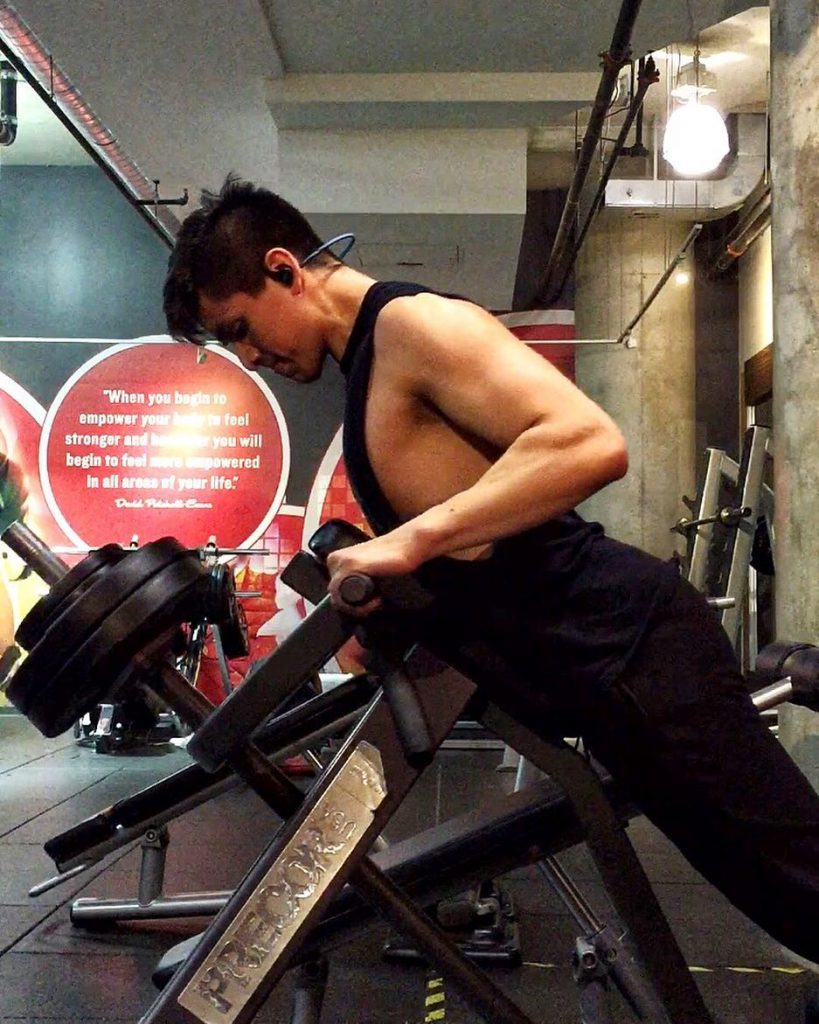
In the Picture, fitness expert Randy Preito performing a Supported chest rows.
READ MORE: 10 Best Trap Workouts: Train Upper & Mid Trapezius
How Do You Perform The Supported Chest Row?
The supported chest row, also known as the dumbbell incline row, is a movement that is performed on an incline bench.
1. Create an incline bench. You’re after a 30-45 degree angle.
2. Turn your back to the bench and rest your chest and torso on it, keeping your feet flat on the floor and your body straight.
3. With your arms straight down towards the floor, hold the dumbbells in each hand.
4. Raise the dumbbells to form a 90-degree angle with your arms.
5. Come to a halt at the top and squeeze your shoulder blades.
6. Return to the starting position in a controlled motion.
Aim for 4 sets of 5-8 reps using heavyweights to help increase strength. You can also train unilaterally by focusing on one side at a time.
There are several form recommendations to make sure you’re doing it correctly. The dumbbells should be in line with your hips at the top of the row. Keep your chest on the bench and your neck and spine align. Your face should be above the end of the bench, not slammed into it.
How Much Weight To Use For Supported Chest Rows?
Now that you know how to do supported chest rows correctly, you should also know how heavy your dumbbells should be. Lifting too heavy can result in form-related problems while lifting too light will not help you build the muscles you want.
Begin by asking yourself the following question to determine how much weight you should be lifting: Do I want to concentrate on muscle hypertrophy or muscular endurance?
If hypertrophy is your goal, you should do fewer reps with heavy weights. This is the finest way to stimulate maximum muscular growth. If you want to improve your muscle endurance, you should do more reps with lighter weights.
Now, to determine how much weight to lift, perform the following test:
- Begin by grabbing two dumbbells that appear to be too light for you.
- Position yourself for supported chest rows.
- Make sure you can complete at least 15 rows with the lighter weights.
- If you can accomplish 15 rows with the lighter weights, move on to a harder set that appears to be more realistically challenging for you OR move on to lighter weight if you couldn’t make it to 15 reps.
- If you want to increase your muscle mass, consider doing 6 to 8 reps of the exercise with bigger weights. If you can feel the burn about halfway through but not so much that it breaks your form, it is your perfect weight.
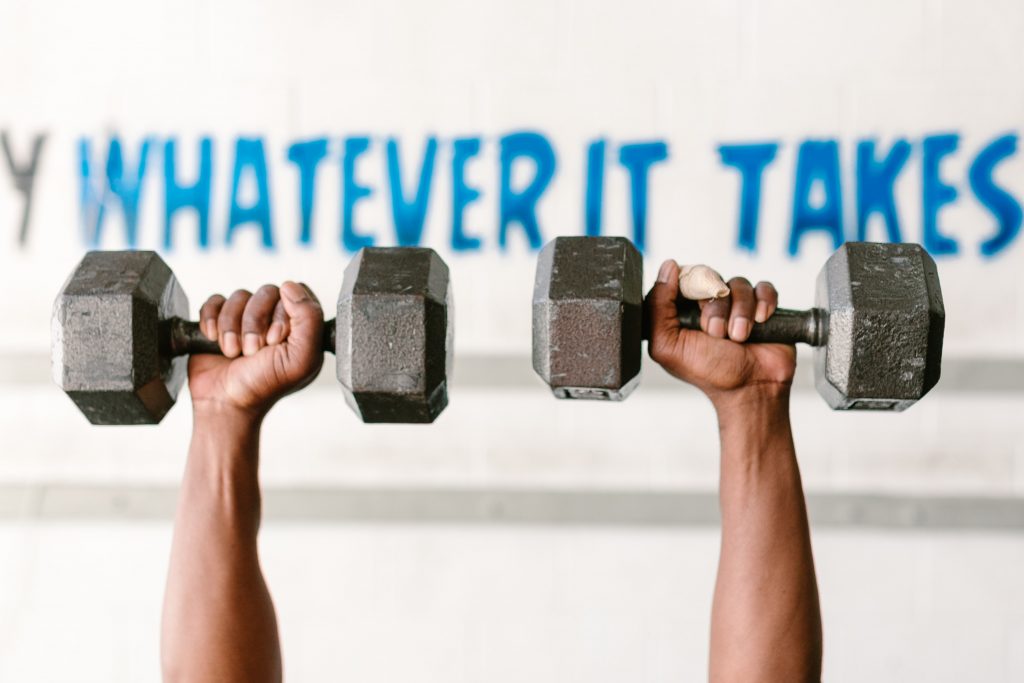
What other types of rows are there?
Rows are a must-do exercise for any upper body or back day. You can alter up the target muscle fibers and improve well-rounded strength by incorporating modifications into your workout. While the chest-supported dumbbell row is excellent for isolating specific muscles, unsupported versions can still help you work your core and other major muscle groups.
There are plenty of other variations also to try as well:
Rack rows: A challenging barbell row that focuses on the lats.
Inverted rows: Inverted rows are a fantastic place to start for novices.
Seated cable rows: It uses gym machinery to relieve the strain on your lower back.
Standing cable rows: These rows are conducted standing and need additional stability.
Meadow rows: A less well-known row that uses a landmine to conduct a unilateral version of the workout.
Rows are an efficient approach to work the back in whatever version works best for you: supported or unsupported, dumbbell or barbell, standing or seated.
If you’re ready to hit the gym and give them a shot, Hussle provides you with access to a gym in whichever method you desire.
ALSO READ: HOW TO DO FACE PULLS – 6 POWERFUL TECHNIQUES
What does Chest Supported Row work?
Dumbbell row with chest support. “It works your back and rear shoulders, improves your posture and increases your bench press.” Because of tight hamstrings or a weak lower back, most men have difficulty getting into a bent-over row position, a hip hinge with a flat back.
What are rows good for?
The row is a popular compound exercise. It consists of several joints that move across a wide range of motion. As a result, it engages a wide range of muscles from all over the body, making it particularly useful for improving upper-body strength and endurance. A dumbbell row with your chest supported is an effective option
Are rows bad for your back?
No, the Barbell Row, also known as the Barbell Bent-Over Row, is a strength exercise that targets the back muscles. It’s a difficult lift to master, but when done correctly, it’s one of the most effective workouts for increasing back strength and growth.

